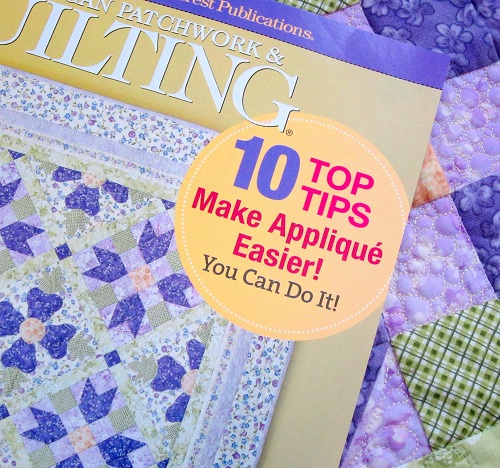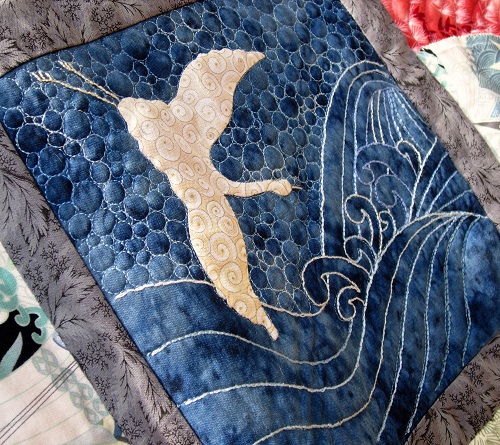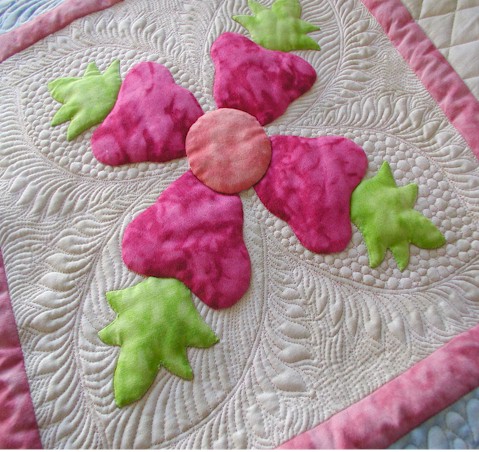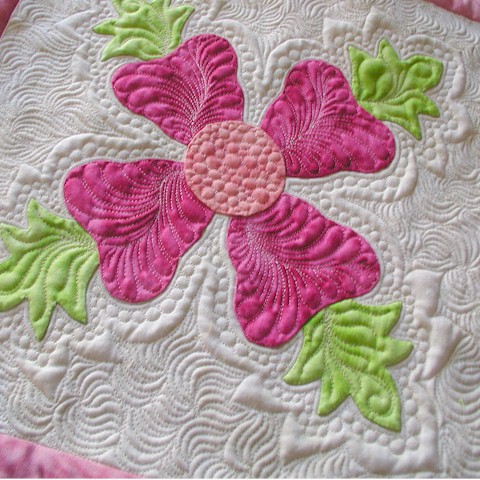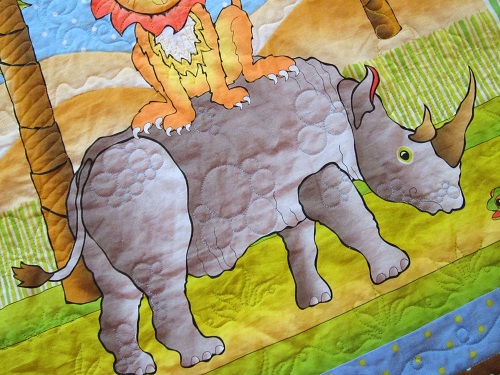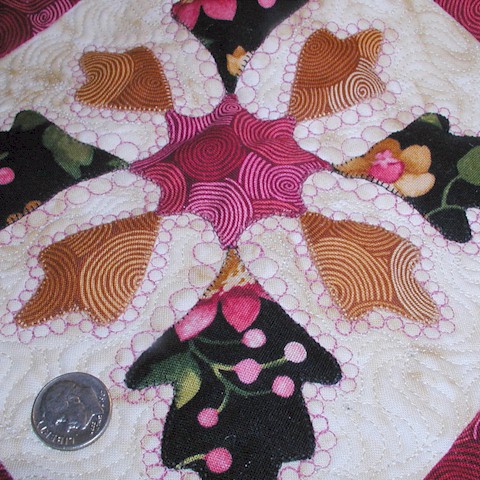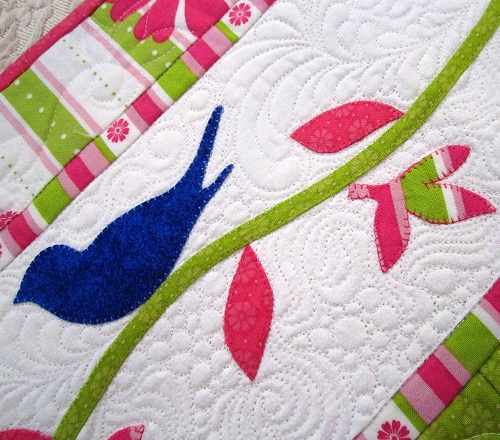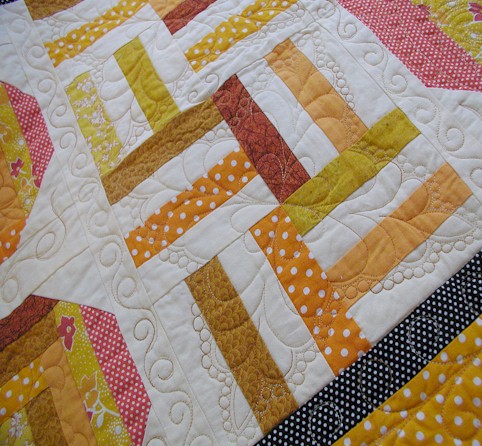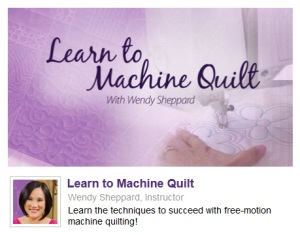Hello Friends, I hope you are well. I am happy to share a little more about my “Roundabout Feathers”, as dear friend Joyce calls them. Joyce gave me her permission to coin the name “Roundabout Feathers” for these fun feather wreaths with a twist! These feathers are free-hand quilted with very minimal marking, as shown later.
[Sorry about that little piece of lint in this following picture!]
SO — you have this open space that is perfect for quilting something feathery! For this particular quilt, I have A LOT of open space that I needed something feathery…. but I wanted to add visual interest to the feather wreaths, and not have all of them look identical… so I thought off-centered and concentric wreaths would do the job.
First, I looked through my piles of dishes, and found two bowls – one large, and one smaller. You can decide what sizes work for you – just make sure one is smaller than the other. And I then trace the circles on the open space. The circles then form the spines of the wreaths, and are the determining factor of the placement of your wreath.
The key is to remember the inside feathers of the inner ring MIRRORS the outside feathers of the outer ring, as shown. You can definitely mark the orientations of the first feather on each ring before you start if the feather wreaths on your quilt are direction-specific.
Then, you would start filling the outside of the outer ring, and inside of the inner ring with feathers!
Then, it’s time to feather the inner feathers of the outer ring.
For the outer feathers of the inner ring, I don’t do “full” feather lobes on some of them just to give the eye a bit of rest — instead I quilt the effect of overlapping feathers, as shown in the schematic.
I find these roundabout feather wreaths to be very versatile. I can place them wherever I want on an open space, and I can decide how large or small my rings would be, and thus further customizing their appearances. I hope you can see what I mean with the pictures of the wreaths quilted in real life that I had shared with you earlier in this post.
I hope you will give these wreaths a try! Curious mind would love to know what you think of them! :)
Thanks for stopping by. I hope you have a lovely week!
***
Click here, here, and here to read my other Thread Talk posts on quilting feather wreaths.







































